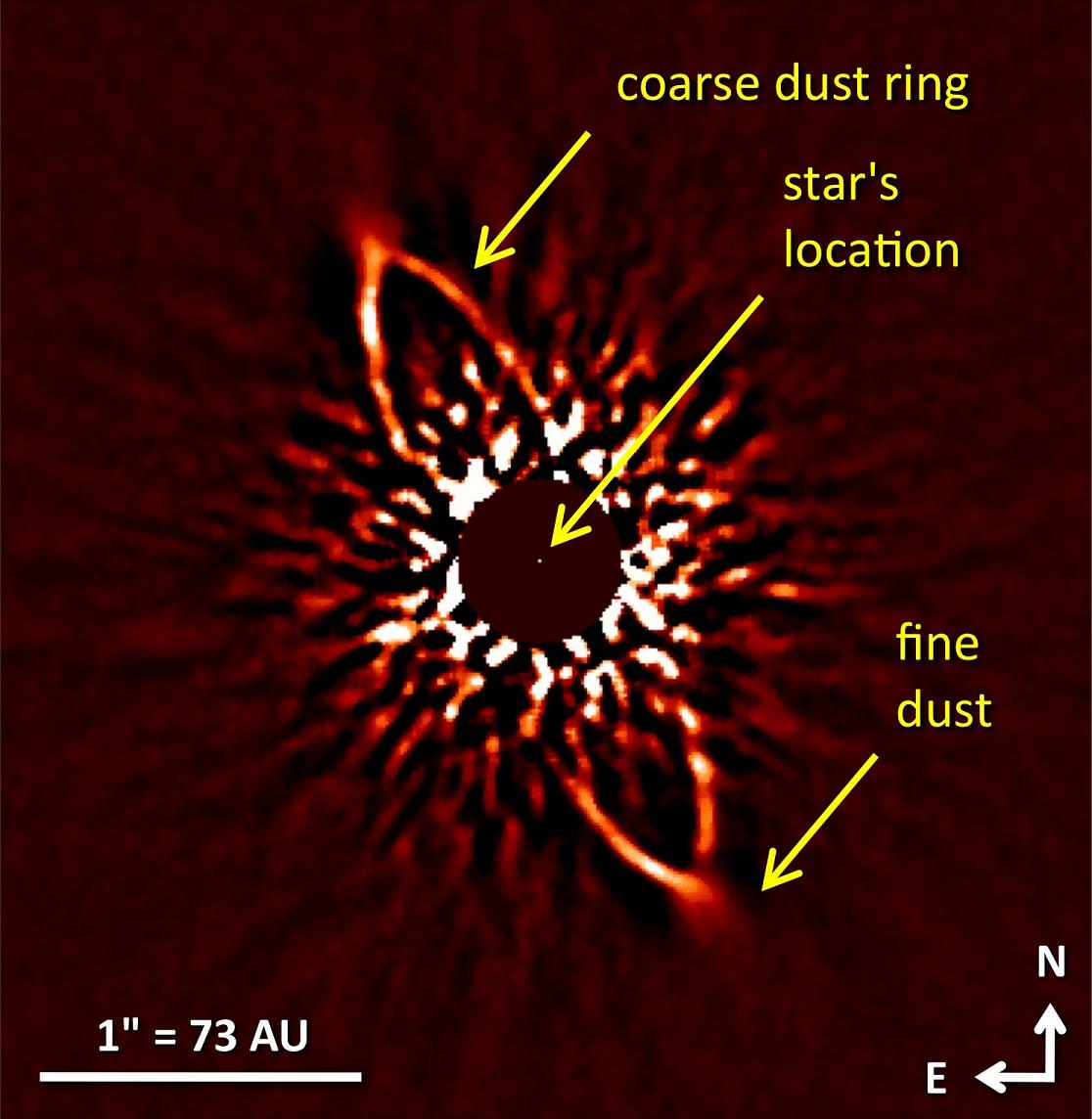[/caption]
No. It’s not a new atomic image – it’s a very unusual look at a star which could help further our understanding of stellar disk structure and planetary formation. As part of the SEEDS (Strategic Exploration of Exoplanets and Disks with Subaru Telescope/HiCIAO) project, this image of star HR 4796 was taken with Subaru’s planet-finder camera, HiCIAO (High Contrast Instrument for the Subaru Next Generation Adaptive Optics). At only about 8-10 million years old, the feature of this stellar image is only about 240 light years away from Earth, yet fully displays its ring of dust grains which reach out about twice the distance as Pluto’s orbit from the central star. This image produced by an international group led by Motohide Tamura of NAOJ (National Astronomical Observatory of Japan) is so wonderfully detailed that an offset between its center and the star’s position can be measured. While the offset was predicted by data from the Hubble and another research group, this new photographic evidence not only confirms its presence – but shows it to be larger than expected.
With new data to work from, researchers began to wonder exactly what could have caused the dust torus to run off its axis. The easiest explanation would be gravitational force – where one or more planets located inside the gap within the ring could possibly be affecting the disk. This type of action could account for an “unbalancing” which could act in a predictable manner. Current computer modeling has shown these types of “gravitational tides” can mold a dust torus in unusual ways and they cite similar data gathered from observations of bright star, Formalhaut. Since no planet candidates have yet been directly observed around HR 4796, chances are any planets present are simply too small and dim to be spotted. However, thanks to the new Suburu image, researchers feel confident their presence could be the source of the circumstellar dust ring wobble.
With image accuracy as pinpoint as the Hubble Space Telescope, the Suburu near-infrared depiction allows for extremely accurate measurements by employing its adaptive optics system. This type of advanced astrophotography also allows for angular differential imaging – by-passing the glare of the central star and enhancing the faint signature of the dust ring. Such techniques are able to establish heightened information about the relationship of the circumstellar disk and gelling planets… a process which may begin from the “left-overs” of initial star formation. As surmised, this material could either be picked up by newly formed planets or be pushed out the system via stellar winds. Either way, it is a process which eliminates the majority of the dust within a few tens of millions of years. However, there are a few stars which continue to hold on to a “secondary disk” – a collection of dust which could be attributed to the collision of planetesimals. In the case of HR 4796, this is a likely scenario and studying it may provide a better understanding of how planets could form in this alternate debris disk.
Original Story Source: Suburu Telescope News Release. For Further Reading: Direct Images of Disks Unravel Mystery of Planet Formation.


